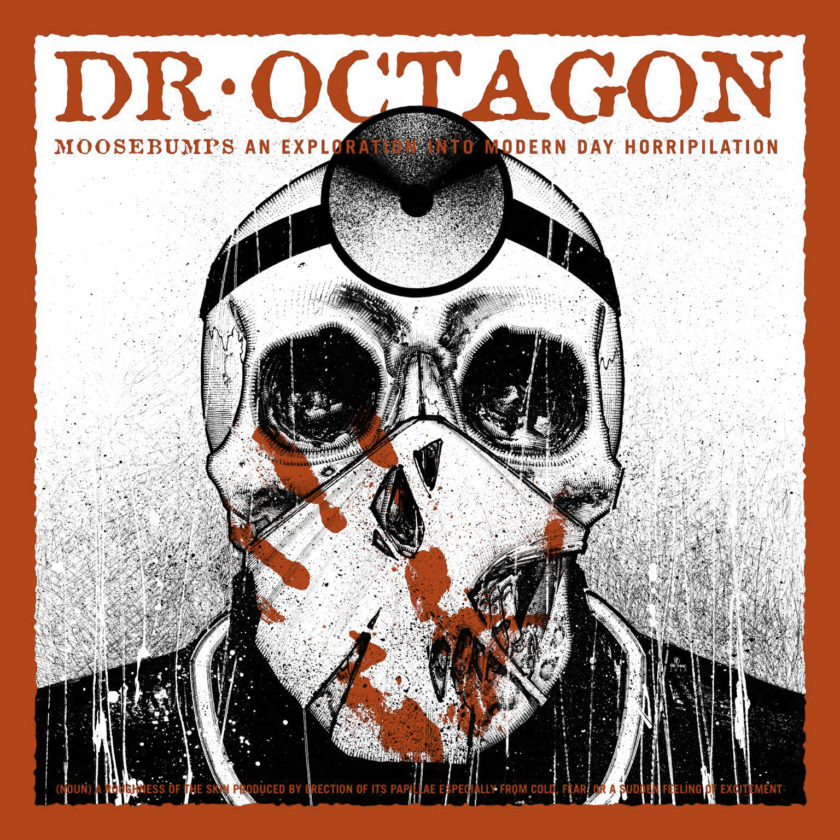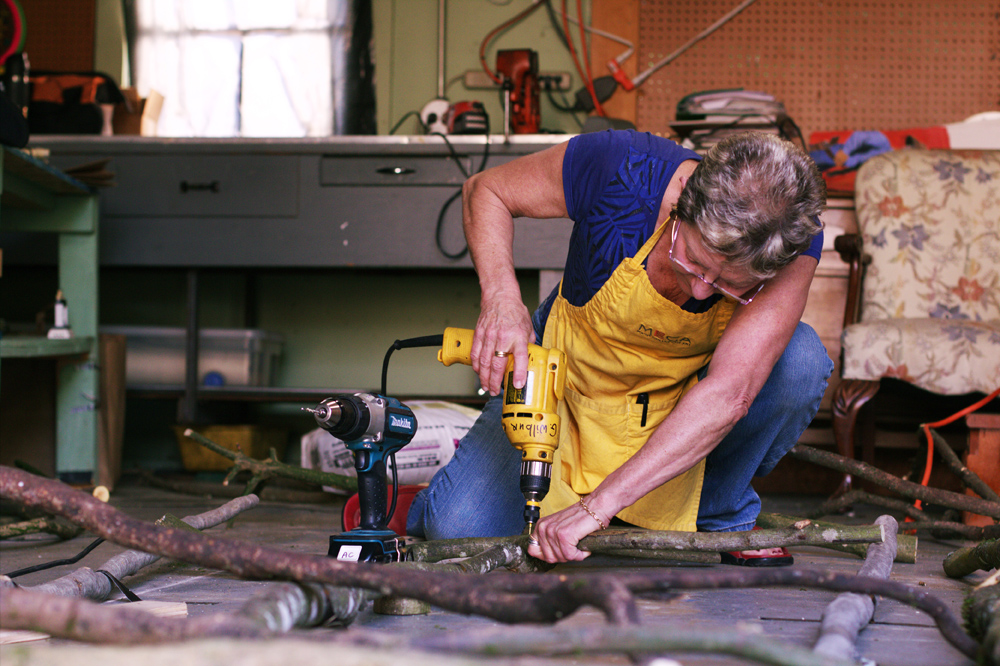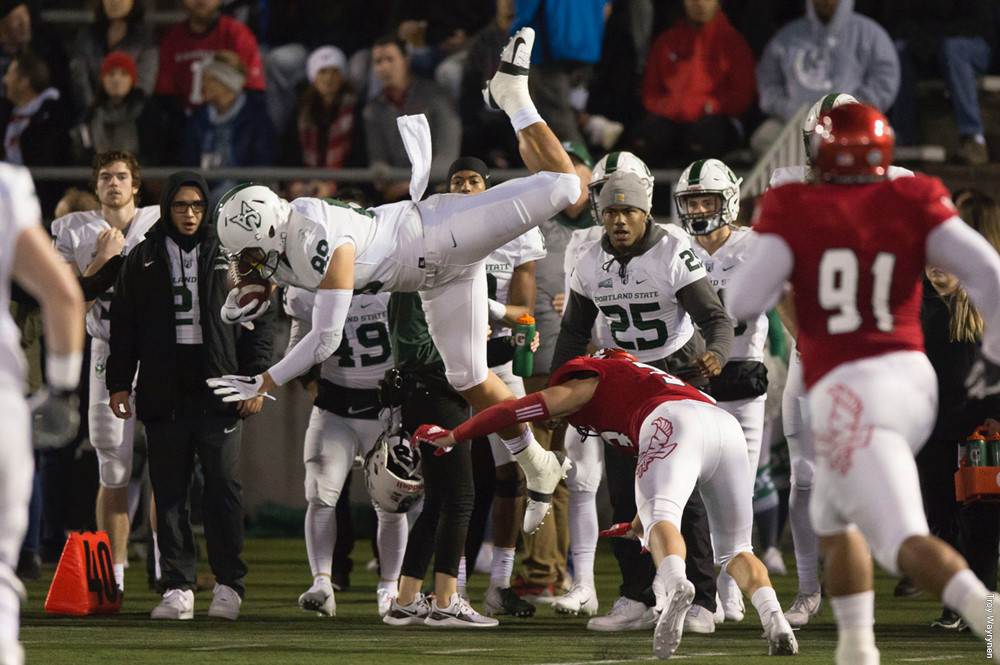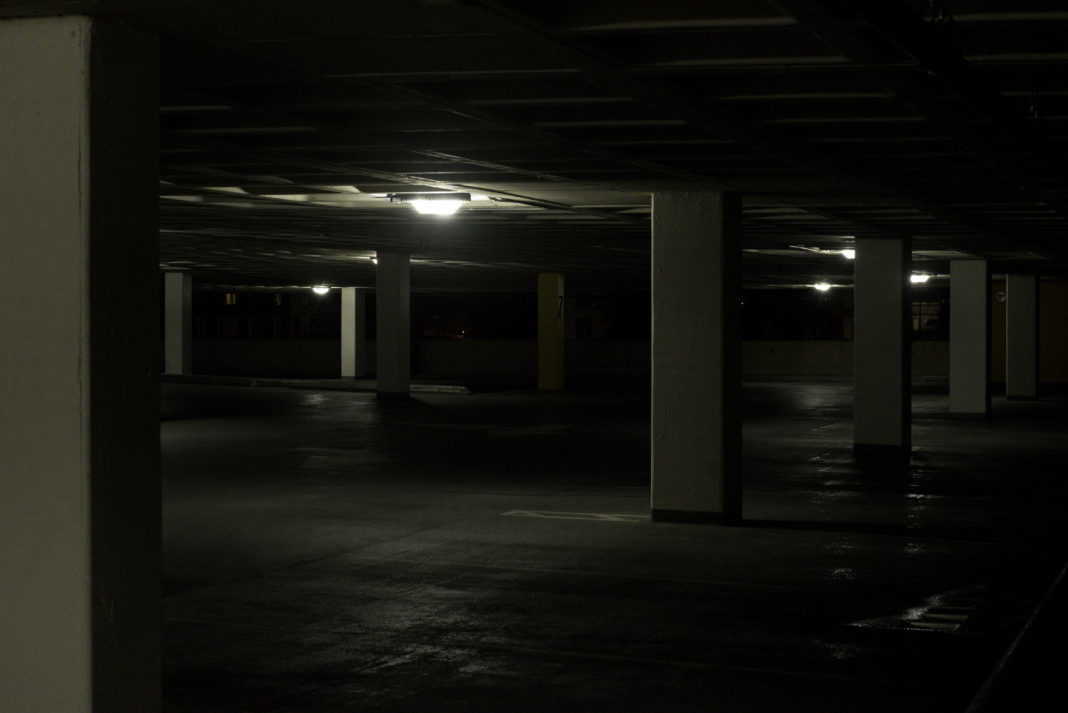Fine arts and graphic design students are tired of being overlooked.
After construction began on the $60 million overhaul to Portland State’s Neuberger Hall, students in the School of Art + Design whose classes were relocated into trailer pods across campus have said they feel #screwedbypsu, according to flyers that began popping up across campus winter term 2018.
However, the sentiment among A+D students that they have been dismissed by the administration hasn’t only cropped up now that one of PSU’s largest academic buildings will be out of commission for two years. A+D has been fighting for more space, improved facilities and more overall attention for years.
“My students are cutting their legs and ripping their pants on the exact same tables I sat at when I went to school here,” said Adjunct Professor of Graphic Design and class of 2013 alumnus Ethan Allen Smith.
In a recent opinion article, Bachelor of Fine Arts student and Portland State Vanguard contributor Jacob Johnson highlighted issues within the A+D department that threatened current students graduation dates and created obstacles for students to meet learning outcomes set by the Office of Academic Affairs.
Additionally, Johnson stated that while classes at Portland Community College cost less than half of those at PSU, the university does not have a kiln, pottery wheels or a dark room, and classrooms are so poorly ventilated that students are unable to work with oil paints.
After the piece was published, students distributed a zine further outlining their complaints and even more posters tagged with #screwedbypsu flooded the hallways and elevator of PSU’s tiny art building on SW 5th Ave.
One poster reads, “If PSU really wants to be the best, maybe it’s time we invest in what has the potential to be the best Art & Design program in the country.”
BFA and arts practices students struggle with limited space, few resources
Despite raising tuition by 5.45 percent for the 2017–2018 academic year in light of state and federal disinvestment in higher education and rising Public Employees Retirement System costs, PSU administration still had to make $9 million in budget cuts. Some of these cuts were distributed to faculty chairs, which meant many adjunct faculty were not hired on for the new school year and classes deemed nonessential were cut.
According to A+D Office Coordinator Samantha Peters, the school cut some adjunct-taught courses that were not required for graduation, including comics courses that historically had full enrollment every term. A+D also cut extra sections of required courses that did not always have full enrollment.
Currently, about 1,100 students are enrolled in A+D, 44 of whom are on the BFA degree path and close to 600 of whom are graphic design majors, according to data collected by Peters. Both programs are regarded as highly competitive in the PSU community. Smith said he’s seen resumes from PSU design students that overshadow those from schools such as the Rhode Island School of Design, a prominent design school in the United States.
According to Senior A+D Instructor Tia Factor, the increase from 14 to 44 BFA students between the 2017–18 and 2018–19 academic years combined with the Neuberger renovation upheaval means more students have had to fight for storage and workspace in small studio, class and critique rooms, some of which are inaccessible to students not taking particular major-related courses at certain points in the year.
“As BFA students, unless enrolled in a BFA class, students do not have access to the BFA studios, which could have compensated for the lacking classroom facilities and allowed oil painting,” said BFA Arts Practices student Karl Freitag in an email.
“I joined the BFA program hoping to work alongside other engaged and excited creative individuals in a shared space,” Freitag continued, “but have found myself cut off from the program altogether [this] past term because I had no access to the studios.”
Additionally, Freitag said he observed more students being placed on the waitlist for classes because trailer pods cannot handle the same classroom capacity as could rooms in Neuberger. According to Freitag, this has left some students afraid they might not graduate on time.
Graphic Design students feel invisible
“The design program here at [PSU] is not only world-class and extremely competitive,” Smith said, “and not only is it the largest program in the art school, which is the largest college in the University, but graduates from the design program are getting into positions at places like Nike and Adidas and Wieden+Kennedy.”
The small art building and art building annex on SW 5th Ave. just around the corner from the Chase Bank were meant to be temporary housing for A+D classes.
“I’m legitimately excited [PSU is] making updates to the campus,” Smith said. “And I love that [PSU is] giving some much-needed and much overdue attention to [Neuberger], even if that means a bunch of students are being filtered into trailers. The problem is, because of that dismissal, especially of the design students, that ‘oh, we can just work anywhere,’ we end up with the short end of the stick every single time.”
Smith said he thinks because the PSU community does not understand exactly what graphic designers do that design students do not get a dedicated space on campus to work or critique each other’s work.
For a program with such a competitive reputation, two windows that won’t properly close in a computer lab on the annex’s second floor, outdated projectors, exposed ductwork, stacks of old painter’s stools and power strips propped up on work tables and dangling from wall outlets belie that reputation.
When prominent industry professionals visit the campus, which Smith claimed occurs as often as on a monthly basis, they have to sit on painter’s stools or uncomfortable chairs, hope the projectors will work with their computers and can’t find parking nearby. “It makes us look really bad,” Smith said.
Smith added he believes the university does itself a disservice by overlooking design students.
Friends of Graphic Design—a student group founded in 2008 and powered partially by the school’s budget and mostly by donated time and resources from the local graphic design community—puts together networking events at which students can show their work to the community and meet local, out-of-state and international professionals.
Not only do these events draw students to the program, Smith said, but they attract money to the university. “If there was a concerted effort by the administration to reach out to the people who are quite literally in charge,” Smith said, “at places like Nike, Adidas, Under Armour…[PSU] would have an immediate response which translates…to money funneled back into the school, which the school desperately needs.”
Arts students want better solution than tuition hikes
During a March 14 budget town hall hosted by Associated Students of Portland State University and Vice President of Finance & Administration Kevin Reynolds, A+D students asked why tuition was slated to increase by another 5 percent this year while they have to deal with buildings in disrepair.
Meanwhile, students complained the business school gets to enjoy the brand new $64 million Karl Miller Center and community colleges offer better arts infrastructure than PSU does.
Some students, including arts practices major Carrie Gulbranson, claimed the art building experiences leaky ceilings and broken wall outlets on occasion. University Budget Director Andria Johnson commiserated with Gulbranson about crumbling buildings she encountered as a PSU business student between 2010 and 2013.
“We’re not in a sustainable funding model,” Johnson said, explaining that community colleges can obtain funding through bonds and property taxes, while PSU relies on diminishing state support and tuition increases.
Referring to Reynold’s presentation in which he explained the university will face a budget shortfall of $33 million next year, Johnson added, “You saw the numbers. That is not going to be solved by cutting at the fringes. We truly have to do something different.”
PSU President Rahmat Shoureshi has proposed a new funding model for PSU in the form of co-ops with local businesses and corporations. Shoureshi said in a March 16 press conference he hopes to roll out the program in the next couple years. The co-op intends to give students two years of paid work experience by graduation via internships with partner companies.
Shoureshi said he has been approached by many business leaders since he took former president Wim Wiewel’s place in August 2017, and plans to trial the co-op program with school of business administration students before expanding it to other programs.
However, Gulbranson and Smith don’t think the business school is the right place to start.
“We are talking about Portland,” Gulbranson said. “You need to know your customers and know where you are at. Nobody comes to Portland to be a business major. People come here to be musicians; people come here to be artists.”
“Nobody comes to Portland to be a business major. People come here to be musicians; people come here to be artists.” – Carrie Gulbranson
Smith agreed and added that design students might actually be more business-savvy than business students.
“Such a fundamental part of our jobs once we get out of here is things like contract negotiations and scoping of work and budget approvals,” Smith said. “That becomes as fundamental to our identity as designers as our love of color an our desperate need to do research. We are all art students, and there’s a part of us that got into this because we’re artists, but we are the business side of it.”
Additionally, Smith said, part of his daily reality as a designer at One Hundred in downtown Portland involves overseeing contracts for millions of dollars. Many design alumni go on to make hundreds of thousands of dollars a year in Portland and around the world.
Shoureshi said he believes partnering with the business community does not negate PSU’s support for the arts.
“From my end, the relationship that we are building and expanding with the business community…is really going to help all students,” Shoureshi explained. “Through the effort of one of our board members, [PSU is] going to have an event at the Wieden+Kennedy facility that is a fundraising for [the College of the Arts] and it is going to happen some time in June. So, there are activities of that nature, and I have to tell you, to my surprise, there are many board members that are really supportive of arts.”
What will it take for arts students to feel heard?
When asked at the press conference how arts students can feel more successful at PSU while lacking resources, Shoureshi touted the recent international success of PSU’s Chamber Choir.
Smith said the response makes sense because performing arts bring more attention to arts practices and design, but A+D has tried for years to get the administration’s attention.
According to A+D Interim Director Lis Charman, the Campus Planning Office conducted a Space Programming Study in 2015 to analyze different options for a new art building on campus.
“This new building is seen as a physical complement to the new mission and vision statements that have been crafted by the School of Art + Design Committee of the Future,” the study details.
The document, put together from surveys of A+D faculty and students, proposes descriptions, photos and sizing for attractive and modern work, critique and lounge spaces. Example photos come from the Pacific Northwest College of the Arts, Oregon College of Art and Craft and other art schools across the country.
However, no specific proposal or blueprint went forward after 2015, Charman said.
Shoureshi added that he has only been president for seven months and hopes students can be more patient with his vision. Additionally, Shoureshi said he plans to meet with every dean and program director and discuss their three to five year plans for their programs. “I am asking them [what] the growth areas within their [colleges are] that we should be investing [in] and making sure that is the case,” Shoureshi said.
Gulbranson said she chooses to be optimistic about Shoureshi’s plans for A+D students. Gulbranson attends PSU with her daughter Mina and said she wants to invest in PSU for many generations. “It is not just our education,” Gulbranson said, “but our kids’ education too. So we are in it for the long term, and we are in it for real solutions.”
Smith said he hopes the administration makes more of an effort to attend student shows and see for itself what design students are able to accomplish and what connections they are making with industry professionals.
“I don’t know what the tipping point is,” Smith said. “If [Shoureshi] were to come to [the “Be Honest” student design showcase in May],I believe by next year there would be immediate changes.”






